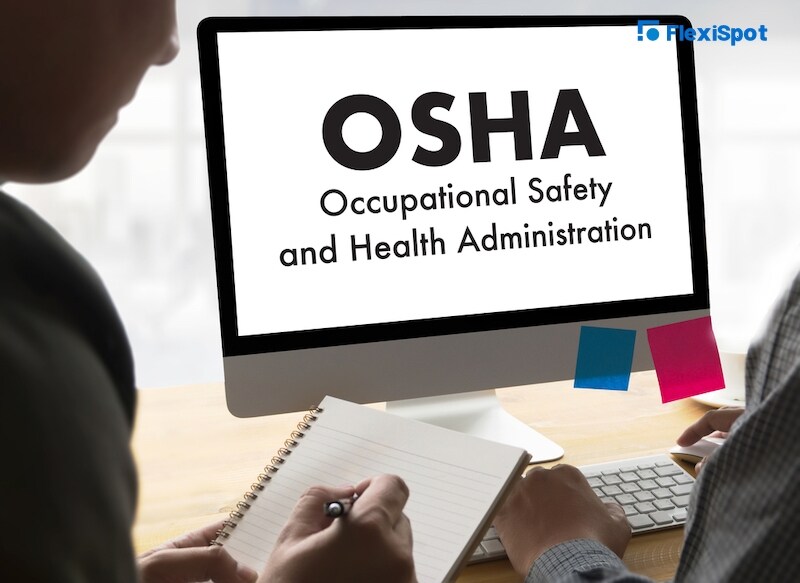Workplace accidents aren’t uncommon. Most of the reported accidents are due to a poor office design and an unthoughtful process flow. This means most workplace accidents can be avoided if the office design is carefully considered with employee safety as a priority. It’s an employer’s responsibility to ensure that all of their workers are safe and without risk of developing health problems due to the workplace. Despite employee safety at work being an employer’s responsibility, it is often not taken seriously.
No matter the nature of the job, if employee health and safety aren’t considered through an ergonomic work environment, your workforce will experience high amounts of stress. If this stress isn’t managed properly, the risk of employees developing work-related MSDs (Musculoskeletal Disorders) becomes critically high. If you, as an employer, don’t take your employees’ physical wellbeing seriously, you’re bound to suffer excessive losses in the form of employee absenteeism and the cost of healthcare services needed to recover from work-related injuries and ailments.
Considering how important workplace ergonomics are and how rarely they are considered by most employers, the Occupational Safety and Health Administration (OSHA) had to step in. OSHA is a prominent regulatory agency under the United States Department of Labor dedicated to inspecting workplaces to ensure proper ergonomics.
OSHA Ergonomics Program Standard – How It Started
OSHA has spent several years studying ergonomics and how poor ergonomics affect employees. According to their findings, of every $3 spent on worker compensation, $1 was a result of poor ergonomics. This means that about 1/3rd of all the employee compensation costs are attributed to poor workplace ergonomics. All in all, employers spend $15 to $20 billion every year to have workers treated for MSDs.
The regulatory body began working on its ergonomic rulebook in 1992, and by 1995, it had drafted its ergonomics standard. The ergonomics standard was declared effective in 2001. According to the OSHA Ergonomics Program Standard, all employers working in the non-construction industry have to identify and take steps to lessen the risk factors of MSDs. Since creating an ergonomic environment with reduced risks to the employees was an added expense (and a big one), there was criticism against the program. However, the program was repealed after a few months.
This didn’t keep OSHA from taking the necessary steps to ensure all employers followed the ergonomics standards for maximum employee safety. Numerous guidelines have been issued for different industries.
OSHA Ergonomic Guidelines for a Healthy Workplace
The overall objective of the OSHA Ergonomics Strategy is to eliminate any risk of injuries in workplaces. OSHA Ergonomics Strategy is targeted to provide employees with all the facilities they need to work in comfort. In short, OSHA encourages employers to design jobs that fit their employees instead of contouring the employee to fit the job. It’s an employee-centric approach that all employers are encouraged to follow.
The basic idea of the OSHA Ergonomics Program Standard is to hold an employer responsible for employee health and safety.
The Scope
The scope of the OSHA Ergonomics Program is quite broad. It encompasses nearly all businesses, including maritime, agriculture, office support, and management services, as well as general industry jobs. The guidelines aim to reduce the risk of work-related musculoskeletal disorders. MSDs are a group of health issues that include carpal tunnel syndrome, pinched nerves, tendons, joint inflammation, ligament sprains, and other muscle strains.
OSHA’s Ergonomics Strategy is focused on making workplaces safe for employees with the right measures in place like Ergonomic Office Chairs and other pieces of smartly designed furniture and tools. This set of guidelines holds the employer responsible for providing employees with a safe workspace. Ergonomic furniture is just one aspect of it. There’s much more to it.
Action Triggers Under OSHA Guidelines
OSHA has clearly specified 5 action triggers that are the leading causes of increased MSD cases among employees. These are the triggers that employers are expected to mitigate. The triggers that OSHA has highlighted are:
- Force
- Repetition
- Contact stress
- Awkward postures
- Vibration
If an employer can create an office design that manages these triggers, the risk of the employees suffering from musculoskeletal disorders and other related health problems can be greatly reduced.
OSHA’s Guidelines to Design Effective Processes
OSHA specifies certain guidelines to help employers design effective processes, especially those operating in high-risk industries like firefighting, processing, office jobs, transportation, warehousing, and healthcare. These guidelines are well thought out and ensure minimal risk exposure for employees.
Management Support
According to OSHA's guidelines, the management should clearly define its objectives and goals, discuss them with employees, and then assign them their respective tasks. With that, it’ll be easier to hold the right people accountable if the need arises. It’s the responsibility of the management to communicate the process clearly to all the employees.
Involve Employees
Most employers strategize solutions on the management level and hand them down to the employees. However, OSHA encourages employers to involve their workforce throughout the process, from worksite assessments to developing the solution and even designing abatement strategies.
Identify Problems
OSHA expects employers to identify all the possible ergonomic risk factors that can lead to MSDs before an incident arises. It encourages a proactive approach rather than a reactive one.
Early Reporting
OSHA doesn’t just require the employer to act proactively. It also puts some of the responsibility on employees. An employee must report any MSD symptoms they may be experiencing at the earliest. OSHA also encourages employers to set up an easy reporting process for their workforce. The earlier the symptoms are reported, the better the chances of a full recovery.
Solution Implementation for Hazard Control
Employers are encouraged to review and analyze their ergonomic protocols periodically to determine any necessary changes they might need to make. This allows them maximum control over the ergonomics of the workplace.
Evaluate the Progress
OSHA encourages employers to establish procedures that help them assess how effective a particular ergonomic process is. This would ensure continuous improvement as the employer can make any necessary modifications timely.
Basic Screening Tool – Assigning the Job to the Right Individual
OSHA also encourages the implementation of their Basic Screening Tool, which is a rule that allows employers to run a basic test to ensure that the individual t chosen for a certain task is suitable for it. It’s a screening procedure with a set threshold for each trigger action. If an employee fails at this step of hazard analysis, the employer shouldn’t assign the task to this particular individual. The Basic Screening Tool enables employers to assign certain jobs to physically able individuals.
OSHA Ergonomics Strategy FAQs
We’ve tried to answer some of the most frequently asked questions about the OSHA Ergonomics Strategy below:
Does the OSHA Ergonomic Program Standard Apply to Employers Without Industry-Specific Guidelines?
Yes. If a particular industry isn’t explicitly mentioned in OSHA guidelines, it doesn’t mean it is exempted from proper workplace ergonomics and employee safety. The employer will still be obliged to ensure their workplace doesn’t have any serious hazards recognized by OSHA [General Duty Clause 5(a) (1)]. OSHA issues alert letters as a part of the enforcement program to ensure every employer follows their guidelines.
Does OSHA Notify Employers About Conditions That Put Workers At Risk of MSDs?
For employers in a high-risk industry, OSHA makes it easier to identify any possible risks by notifying them proactively. It’s a part of the SST (Site Specific Targeting) plan. If these injuries are due to poor workplace ergonomics, OSHA urges employers to seek immediate assistance to mitigate the risk and make their workplace safer for their employees.
The OSHA Ergonomics Program Standard is a pro-employee program that safeguards their right to work in a safe workplace. It holds the employer responsible for any risks to employee safety. On the other hand, employers receive the benefit of improved employee morale, higher productivity, and a lower employee turnover rate.


